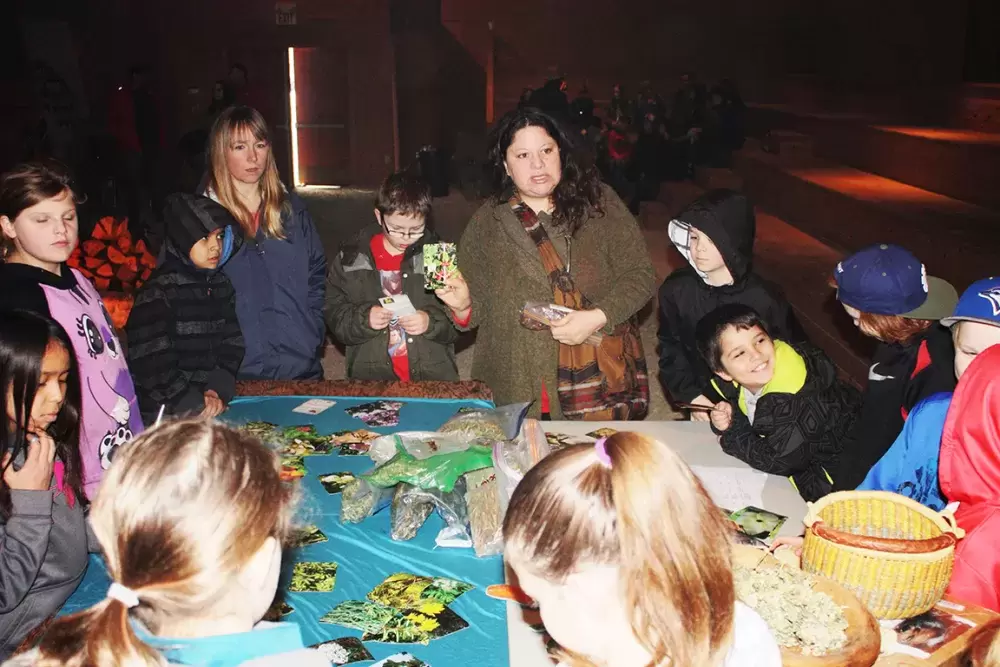Port Alberni’s School District 70 elementary students were given the opportunity to learn about Nuu-chah-nulth culture through a program that gets them out of the classroom and into the Tseshaht Longhouse.
Nuu-chah-nulth Education Worker Richard Samuel said that the students learned about First Nations governance, Tseshaht history and indigenous plant knowledge.
According to Darrin Olsen, co-principal of AW Neill Elementary School, the topics were chosen as an introduction into local Indigenous learning.
“Last year AW Neill Elementary went up to the longhouse and had a similar experience, (and) this year expanded to the rest of the local elementary schools,” he said.
The Grade 4 students arrived at the Tseshaht Longhouse Feb. 21. The dim room is lined with benches and features a crackling wood fire that filled the room with smoke. The idea, said Olsen, was to give them a feel of what a longhouse is. This is in keeping with the direction of the new BC curriculum to integrate First Nations perspectives and history in all aspects of the subjects being taught.
“We feel that there is no better way to incorporate Aboriginal teachings than in a local longhouse,” said Olsen.
The class was divided into three groups. One heard Ahousaht elder Wally Samuel talk about the concept of Nuu-chah-nulth governance. Another flocked around a table filled with dried plant samples as they listened to Nitanis Desjarlais talk about the benefits of harvesting and eating indigenous wild plants.
The third group heard Tseshaht’s Aaron Watts talk about Tseshaht’s whaling history.
Richard Samuel said the group ended the morning with lunch, catered by Joan Dick. Samuel said the lunches consisted of mowach (venison) stew, fish soup and bannock. This allowed the students to sample what Nuu-chah-nulth people relied on for sustenance.
All elementary schools in the district were invited to participate in the learning opportunity. The focus was the Grade 4 classes. Indigenous learning continues into next week.
“Our thanks and appreciation goes out to the Tseshaht people for the use of their facility,” said Olsen.







